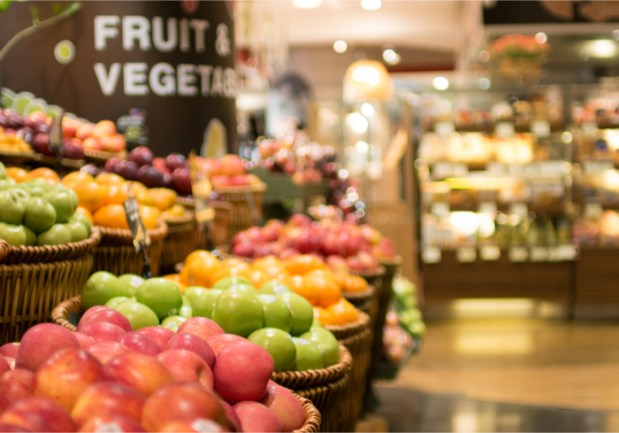Cashierless Stores Take Seattle Grocery Cues To Asia

Thousands of miles from Seattle, where Amazon Go opened in January, the cashierless checkout model is taking hold in other parts of the world. Singapore, in particular, recently saw the opening of a supermarket that uses digital payment technology to allow consumers to pay for items instead of visiting cashiers.
habitat by honestbee, which is an extension of a regional on-demand delivery service called honestbee, is a 60,000-square-foot space that is billed as both a grocery store and a dining destination. To purchase items at the store, consumers download an app called beePay, which connects to their credit cards or the company’s mobile payments wallet. Customers can then use one of two different checkout options to pay for their items.
The first AutoCheckout option doesn’t involve much effort on the part of the consumer. They push their shopping carts into a checkout point and scan a pass before the grocery items are scanned and put into a recyclable bag through a robotic system. When the groceries are ready to be picked up, a push notification tells consumers they can head over to the collection point, where consumers scan a pass to retrieve their items. The second method allows consumers to use a “scan and go” function on the company’s app when they have less than 10 items.
Either way, the rest of the grocery shopping experience is similar to grocery stores with more traditional checkout methods. That is, the supermarket still allows consumers to select items, put them in a cart and walk to the checkout area without being impeded by technology. But at checkout, the process seeks to streamline the time-consuming part of the consumer’s shopping journey.
“They avoid the hassle of queueing at the cashier and waiting for bags to be packed,” honestbee CEO and Founder Joel Sng said in an interview with PYMNTS. “It allows them to fully immerse themselves into the retail space with convenience and efficiency.”
While Sng would not compare his shopping experience to Amazon Go, he did note that the company was looking to expand the concept to markets outside of Singapore “in the near future.” He also said the company was now “exploring partnerships” for other countries.
Beyond the cashierless grocery store, the company also offers a marketplace that delivers fresh foods. After starting in Singapore in 2015, the company has since broadened its operations to countries such as Japan and the Philippines.
The Marketplace of Cashierless Ideas
In the United States, Amazon has brought its cashierless Amazon Go concept to Seattle and Chicago, and plans to open a location in New York City. There have also been reports that Amazon may be looking to open 3,000 stores. To shop in those stores, customers must first download the Amazon Go app on their mobile device and scan the app upon entering. Customers then proceed to shop, but don’t have to check out when exiting. Instead, the stores use cameras and sensors on shelves, as well as a computer vision system, to scan the items being purchased and automatically charge them to the shopper’s Amazon account.
Beyond Amazon, Zippin has opened a cashierless store in San Francisco. At the location, customers have to first download the app, which provides a QR code that they scan when entering the store. Customers can then shop the aisles, leave when they are finished and receive their receipt via email. Like Amazon Go, the store relies on sensors and scales to detect which items are taken off the shelf, while cameras with built-in computer vision are used to record the transactions and track customers’ movements.
Will more stores like Zippin, Amazon Go and habitat make cashierless checkout the new standard way to shop for fresh fruits, vegetables and sundries? That remains to be seen, but the concepts show that the idea is gaining traction with retailers as they seek to reduce friction in the grocery store experience.
